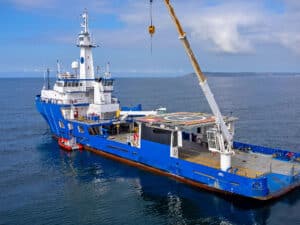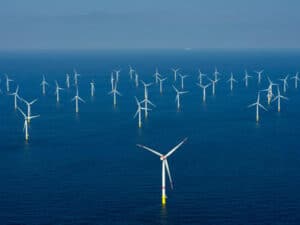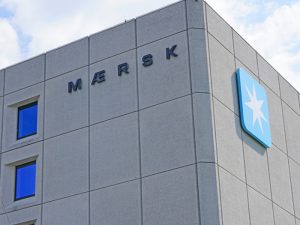
USCG issues report on Carnival Splendor fire
Written by Nick Blenkey JULY 16, 2013 — While Carnival Cruise Lines continues to deal with the impact on bookings of the Carnival Triumph incident and subsequent problems, the U.S. Coast Guard has released the final report on the investigation into an earlier event that attracted much unwelcome publicity: the November 8, 2010 Carnival Splendor fire.
JULY 16, 2013 — While Carnival Cruise Lines continues to deal with the impact on bookings of the Carnival Triumph incident and subsequent problems, the U.S. Coast Guard has released the final report on the investigation into an earlier event that attracted much unwelcome publicity: the November 8, 2010 Carnival Splendor fire.
The Splendor fire drew widespread media coverage. More such unwelcome publicity followed subsequent incidents
The report says the fire resulted from a major mechanical failure in the number five diesel generator (DG5).
The following extract from the report spells out the details
This casualty was initiated by a hydrolock [hydraulic locking] event which resulted in a bend in the B1 connecting rod of DG5. This condition went undetected and eventually led to a fatigue fracture of the B1 connecting rod on November 8, 2010. The fatigue fracture resulted in a loss of lube oil to the A1 cylinder and the destruction of various components of the shared crankshaft bay.
The poor condition of the air cooler on the B side of DG5 contributed to the hydrolock event. Excessive rust particles from the plating that constructed the heat exchanger base and other components at times may have performed like a check valve. When the engine was secured, drainage flow from other operating engine air coolers that did not have excessive corrosion and corresponding blockage, could push past the particles and enter the receiver space of DG 5.
When DG 5 was started the nearly 3 bar (43 psi) of air pressure developed by the turbocharger may have partially forced the particles back to the drains until they restricted flow. Fluid could have also accumulated due to a leaking tube or tubes within the heat exchange tube bank. At some point, enough fluid accumulated in the receiver and eventually entered the B1 air intake port.
The poor design of the air cooler system contributed to both the deterioration of the system and the excessive accumulation of fluid in the B side air cooler for DG5. While Carnival had recognized the problem with the air coolers on similar vessels, replaced the air cooler on the Carnival Splendor in July 2010 and took steps to prevent and manage the accumulation of fluid in the air coolers, the lack of formal procedures to document these measures and the poor condition of the air coolers (as observed post-casualty) suggests that these procedures were not routinely followed. Furthermore, the solutions devised after the July 2010 air cooler replacement were short-term fixes which relied on human intervention to manage the accumulation of water in the air cooler vice long-term engineering fixes to prevent the accumulation of fluid in the air coolers.
DG5 was equipped with a slow turn system which should have assisted in the prevention of fluid accumulation in the cylinders as well as the detection of fluid in the cylinders during starting. However, the decision by Carnival to lengthen the slow turn interval from 30 minutes to 2 hours may have made the engine more susceptible to the accumulation of fluid in the cylinders and lessened the likelihood of fluid detection when no slow turn takes place before engine start-up.
Fire
As a result of the fatigue fracture of the B1 connecting rod for DG 5, engine components, and fuel and lube oil were ejected from the engine casing and created a pool fire on the deck plates between DG5 and DG6. This initial fire on the deck plates between DG5 and DG6 did not last very long and was likely extinguished by the Hi-Fog system or burned out on its own.
Prior to extinguishment the initial fire ignited cables in the wire ways and bundles causing a deep seeded secondary fire located directly above DG5 and DG6 which would smolder, produce smoke and ignite for hours after the casualty. This secondary fire most likely extinguished itself because of a lack of oxygen when the watertight doors were secured for a few hours during the attempt to use the fixed CO2 system.
Post-casualty analysis of the event revealed that the installed Hi-Fog system for local protection was activated 15 minutes after the initial fire started. This delay was the result of a bridge watchstander resetting the fire alarm panel on the bridge.
This was a critical error which allowed the fire to spread to the overhead cables and eventually cause the loss of power. While the fire was eventually extinguished, the failure of the installed CO2 system and the poor execution of the firefighting plan contributed to the ineffectiveness of the crew’s firefighting effort. There were no injuries or fatalities as a result of this marine casualty and the vessel safely reached the port of San Diego, Calif., November 11, 2010.
As a result of this casualty and the initial findings by investigators, the Coast Guard issued two safety alerts which covered the operation, testing and maintenance of CO2 systems. Furthermore, Carnival took steps to evaluate fire safety systems, firefighting doctrine and training, and procedures for inspection and testing of installed safety systems. Specifically, Carnival has removed the 40-second time delay from the automatic activation sequence for the Hi-Fog system and has implemented short- and long-term solutions to rectify the problems associated with the activation of the CO2 system.
There are five safety recommendations in the report addressed to Carnival, Lloyd’s Register, Panama and the Coast Guard. The recommendations address the conditions onboard the Carnival Splendor that contributed to this casualty, as well as the problems with the CO2 system installation on all Dream class vessels. In addition, the recommendations to the Coast Guard address the need for improved guidance to enhance the conduct and evaluation of fire drills.
As a Substantially Interested State, the Coast Guard performed a safety investigation of the incident on behalf of the Carnival Splendor’s flag state, Panama. The investigation included representatives from Panama, the National Transportation Safety Board, Carnival Cruise Lines (including their legal representatives and technical experts), Wärtsilä (Splendor’s engine manufacturer) and various other specialists.
Download the full report HERE





Leave a Reply
You must be logged in to post a comment.